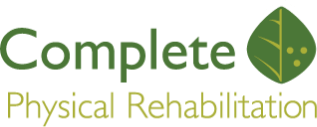After an extremely mild early winter/Christmas season, it appears that winter is fully set to arrive on Saturday, as the NYC/NJ area will have our first snowstorm of the season.
I felt compelled to write this because my patients, especially my back patients, has expressed some concern that their conditions may be exacerbated from shoveling snow. However, I feel that if you follow some general rules when you’re out there you should be relatively safe.
PROPER SNOW SHOVELING TECHNIQUE AND POSTURE
When I treat patients for Physical Therapy, I do a lot of education regarding posture, especially when it pertains to daily activities. Living and growing up in New Jersey, you get used to snow and having to shovel. You also get used to the pain that accompanies having to spend a couple of hours outside shoveling snow in the winter months. But when you go out to shovel your driveway, or your car out of a side street parking spot, be sure to keep in mind these quick tips:
1) Use your legs. When you scoop up a shovel full of snow, use more of your legs to squat, keeping your back as straight as possible, instead of keeping your legs straight and bending your back over

2) Push the snow as much as possible, and lessen the amount of lifting. This will help you to use more leg strength and put less strain on your back. If you don’t have to lift the snow, don’t! Your back and legs will thank you for it.
3) Take frequent water and rest breaks. My general rule is to take a small break for rest and a sip of water every 15-20 minutes that you are outside shoveling. Snow shoveling is just like any other strenuous activity, only it’s one that you don’t perform frequently. Your body may tire faster because you’re just not used to doing the shoveling motions on a regular basis. And when you get tired, you know what happens: form goes right out the window and your chances for injury increase exponentially as you rush just to “get it done.” Remember, you want to get it done, but you don’t want to get injured in the process!
4) Seriously consider warm up and cool down stretches. As stated in #3, snow shoveling is quite an athletic activity. So you should treat it as such and give yourself the best possibility to avoid injury.
5) Wear proper clothing that will keep you warm and toasty. Warm muscles will stay loose and significantly reduce the possibility for strains or sprains.
As a back specialist, I see these injuries all the time. But if you keep these tips in mind, hopefully you’ll be able to prevent extensive back problems from snow removal.
